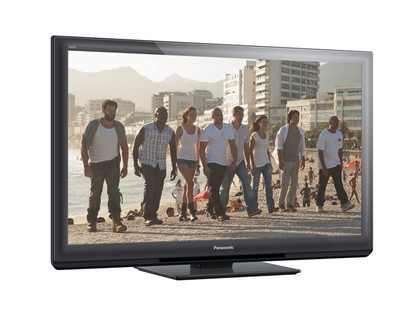Why you can trust TechRadar

Sound
Audio is a pleasant surprise. There are a number of tweaks and presets available including Balance Control, Headphone Volume, plus Music, Speech and user modes. Built-in surround options comprise V-Audio and V-Audio surround.
There's little sense of being surrounded by anything aural and while the speakers suffice for everyday listening, you'll certainly need a separate sound system for watching movies and dramas.
Value
Given that it delivers much more than you'd expect of such a pig-ugly screen, the TX-P42ST30B seems reasonably enough priced at around £1,300, especially compared with Panasonic's TX-L32DT30B, a 32-inch LCD that sells for just £200 less.
That's 10 extra inches for not much more cash. Until now you simply couldn't get this level of 2D and 3D performance plus online TV and multimedia playback on a 42-inch screen for this kind of outlay. It's just a pity the 3D specs are such an expensive extra at around £100 each.
Ease of use
Sign up for breaking news, reviews, opinion, top tech deals, and more.
Unfortunately, Panasonic has not changed its Freeview guide from the GuidePlus, which is slow to load, doesn't maintain audio or visual contact with the current broadcast and has amateurish adverts taking up valuable space on the guide. It does at least tell you if a standard-def show is also in HD on one of the four HD channels and searching using the alpha-numeric keypad is a breeze.
Similarly, the TX-P42ST30B's own menu system is easy enough to operate if not as aesthetically pleasing as many others. The menu of greatest interest is the Picture one that reveals the pared down nature of its adjustments.
There is the usual gamut of preset modes (Dynamic, Natural, Cinema, Game, etc) and options to play with brightness, contrast, sharpness, colour balance (a bit like white balance) and a Vivid Colour on/off switch, but the lack of individual hue adjustments may be seen as a cut too far.
A 3D option provides minor tweaks to the way the image is detected and displayed but doesn't let you mess around too much with the depth.
The IFC off/mid/max button and Clear Cinema on/off control are – annoyingly – buried in the Advanced sub-menu. Connect a 24p Blu-ray feed and these are automatically replaced by Blu-ray 24p Smooth Film on/off. Other advanced controls include Resolution enhancer, a pixel orbiter and scrolling pattern for removing burnt-in onscreen logos.
It's annoying that no 3D specs are supplied, but at least the latest models are fairly comfortable and some can be recharged using the USB output. They do, however, cut out more light than other brands' glasses, but at least it means you can find a suitable use for the TV's otherwise ridiculously harsh Dynamic mode.
The remote control has, in keeping with the set, been given an inferior finish. Sprayed light grey, it's far from the most attractive handset you'll see and rams home the message that you're an entry-level customer.
Overall, it's a decent enough screen to operate and if you've got in a bit of a mess with the settings it's always worth giving the C.A.T.S control a go for a surprisingly good reset based on your room's ambient light.
Current page: Panasonic P42ST30B: Sound, Value, Ease of use
Prev Page Panasonic TX-P42ST30B: Picture quality Next Page Panasonic TX-P42ST30B: Verdict